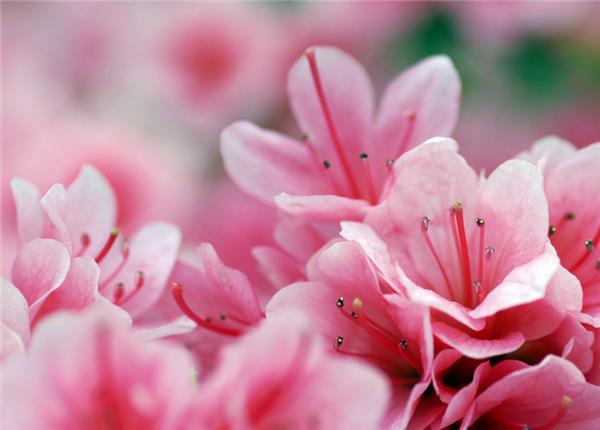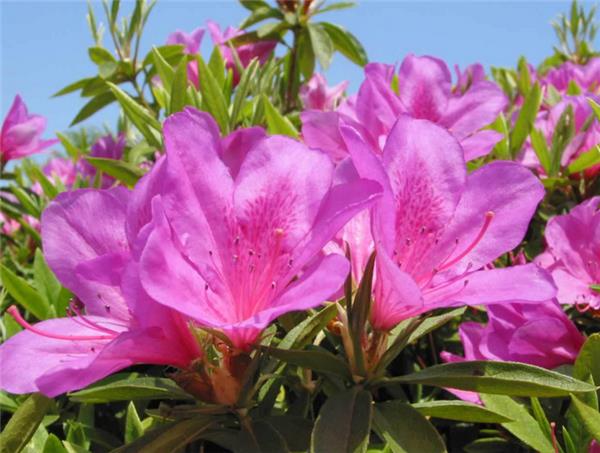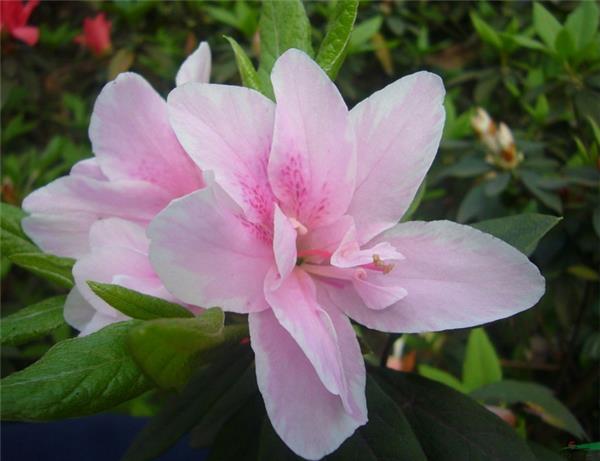Cultivation methods of Rhododendron microphylla Identification method of Rhododendron microphylla
Rhododendron is a special variety of rhododendron. Today we would like to introduce the cultivation and identification methods of rhododendron. If you are interested, let's have a look.

Rhododendron angustifolia data
Rhododendron angustifolia is a special variety with small leaves and flowering period from March to April, from which it can be inferred that the larger one may be the eastern rhododendron, and the possibility of the western rhododendron can not be ruled out. In addition, rhododendron has obvious antitussive, expectorant and anti-inflammatory effects, but the antiasthmatic effect is not strong enough. Because the seed particles of rhododendron are very small, the requirements for sowing and raising seedlings are very strict, including soil disinfection, air humidity guarantee, etc., which are not easy to meet under family conditions, so it is recommended to use the method of insertion. If there are rootstocks, grafting can also be used.

Cultivation methods of Rhododendron
Cultivation of small-leaf rhododendron between May and June, you can choose the semi-lignified branches with short internodes, cut off from the base as cuttings, and retain 3 to 5 leaflets at the top. If the branches are too long, you can also cut off the top tips. The cutting medium can be orchid mud, alpine humus, vermiculite, perlite or yellow core soil, etc., with a thickness of about 15 to 20 meters and a drainage layer of 7 to 8 meters below. After the medium is wet, the cuttings are inserted into the substrate, and the depth of the cuttings is about 1 ~ 2 of the ear length. A small amount of cuttings in the family can also choose a large flowerpot to fill the medium instead of the seedling bed.

After insertion, the cuckoo is moisturized with plastic film, the temperature is controlled between 25 ℃ and 30 ℃, and a shade is set up to block the sun, or placed in the shade, to keep the substrate moist all the time. The eastern cuckoo can take root after about a month, while the western rhododendron takes 60 to 70 days to take root. After September, the shading time can be reduced, and the dilute urea solution can be applied once, the concentration is about 0.2%, and it can be put on the basin in late October. If the full light electronic time intermittent spray device is used in the production, and vermiculite is used as the substrate, it can survive after 20 days, and the general survival rate can reach more than 95%.

Identification method of Rhododendron
Character identification
Leaflet rhododendron leaves are broken, complete and oval after flattening, 1-1.5cm long, 4-7mm wide, blunt round at both ends, entire, margin slightly curled downward, densely covered with silver-white or green glandular scales, petiole about 3mm, covered with scales. Flowers crumpled, light brownish yellow, light blue or purplish blue, intact, calyx 5-parted, lobes ovoid, Corolla funnelform, stamens 10, anthers ovate, brownish red. The breath is fragrant, bitter and slightly astringent.
Microscopic identification
Leaf surface view: there are discoid glandular scales in the upper and lower epidermis, and the cells in the lower epidermis have head-like processes of milk ☆ prohibition ☆. The discoid glandular scale is composed of multicellular cells with radiant arrangement of surrounding cells, yellowish or yellowish brown, 430-540 μ m in diameter and 4 or 6 rows of stalk cells. Parenchyma cells contain calcium oxalate cluster crystals.
Related
- Wuhan Hospital Iron Tree Blooming Result Was Instantly Frightened by the Gardener Master
- Which variety of camellia is the most fragrant and best? Which one do you like best?
- What is the small blue coat, the breeding methods and matters needing attention of the succulent plant
- Dormancy time and maintenance management of succulent plants during dormancy
- Minas succulent how to raise, Minas succulent plant pictures
- What are the varieties of winter succulent plants
- How to raise succulent plants in twelve rolls? let's take a look at some experience of breeding twelve rolls.
- Attention should be paid to water control for succulent plants during dormant period (winter and summer)
- Watering experience of twelve rolls of succulent plants
- Techniques for fertilizing succulent plants. An article will let you know how to fertilize succulent plants.



